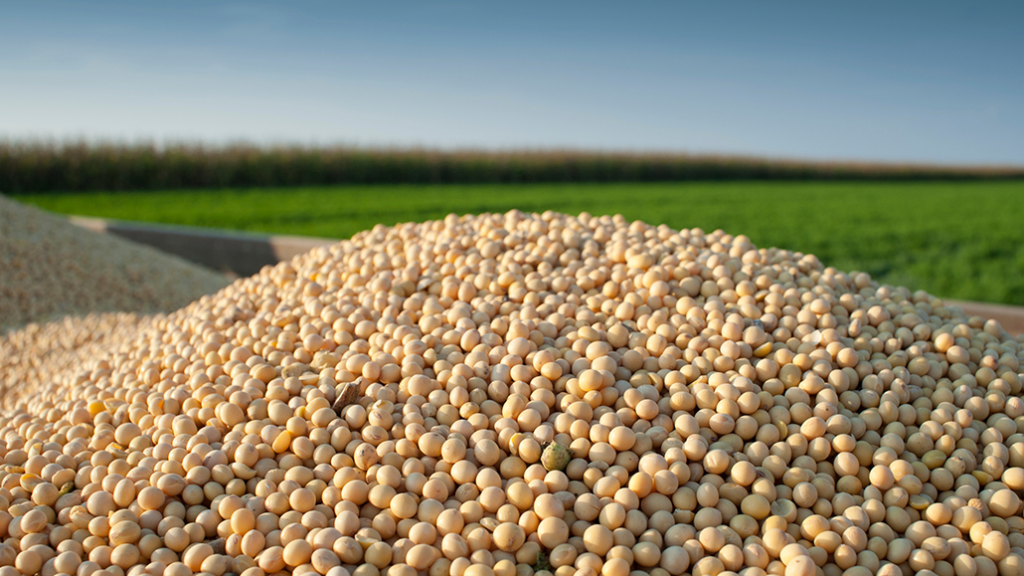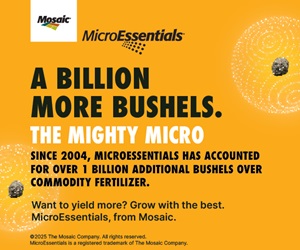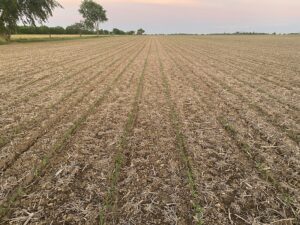Does organic production need tillage?
GROWERS DISCUSS REDUCED TILLAGE OPTIONS

IMPLEMENTING REDUCED TILLAGE or no-till practices on organic farms is possible without sacrificing yield or profitability, according to three organic producers who spoke as part of a panel discussion in an on-demand session at the 2023 Ontario Agricultural Conference.
“It requires strong systems thinking, the proper equipment, and an innovative mindset to make it work,” says Jake Munroe, soil management specialist with the Ontario Ministry of Agriculture, Food and Rural Affairs (OMAFRA), who moderated the session.
BENEFITS OF REDUCED TILLAGE
For Morris Van De Walle, who grows a mix of organic grains, oilseeds, and vegetable crops near St. Mary’s, Ontario, the initial motivation to experiment with reduced tillage in 2006 was a focus on soil health. But over the years, he says increased efficiency has also proven beneficial.
“Over time, the main reason [to reduce tillage] has evolved to time management,” he says. “It allows us to crop the amount of acres that we do and spread out the workload.”
Brett Israel of 3Gen Organics, a 1,000-acre mixed-crop and 180-farrow-to-finish hog operation near Drayton, Ontario, agrees.
“We all know that the more tillage that we do, the more risk of soil erosion and soil health issues, and so there is a really beneficial aspect of being more prudent with our tillage,” he says. “In order to have adequate scale in an organic system with limited access to labour, it’s important to be as efficient as possible. The excessive amount of inter-row cultivation, particularly for managing crops like soybeans, definitely ties up manpower. If we can figure out ways to be more efficient with our time, we can farm more acres under an organic production system.”
SOYBEAN SUCCESS
Van De Walle and Israel have taken a trial-and-error approach to reduced tillage, taking what they have learned each season to tweak their approach in subsequent seasons.
Van De Walle says they started with 80 acres of no-till soybeans, increasing to 250 acres this past year. “We’re sold on the system,” he says. “We consider yields over 40 bushels a success, and most years, we get that.”
Likewise, Israel started with a small 5-acre field of no-till soybeans planted into cereal rye that had been terminated with a roller-crimper. After three years, the results were underwhelming. “Some years, the [yield] gap was so large it was hard to justify it,” he says. “But we knew that the rye had a real benefit to the system, so we tweaked it.”
In the past two seasons, Israel has overwintered the cereal rye, harvesting in the spring to use as a forage for the livestock — then a few weeks later, used a high-speed disc before seeding the soybeans.
“For the past couple of seasons, they’ve been the best beans on the farm,” says Israel, noting that one season they got a yield of 65 bushels an acre, with added benefits of forage crops for the sows and soil health benefits of keeping living roots in the soil for more of the year and keeping the soil in place. This past year, Israel planted 70 acres of soybeans using this approach and plans to increase it year by year.
CHALLENGES AND OPPORTUNITIES
Controlling weed pressure is a constant battle in an organic system — an issue that persists when practicing reduced tillage or no-till.
“We’ve definitely seen the less tillage we’re doing, the more perennial weeds we’re dealing with,” says Israel. “A focus on managing those weeds somewhere else in the rotation has been important, whether that be getting alfalfa back into the system, going back to some moldboard plowing here or there.”
Ken Laing, who farms 93 acres of organic vegetables near St. Thomas, agrees. “Getting weeds under control before you get into no-till is critical,” he says. “Also, realizing that different cover crops will give you different durations of weed control.”
For conventional farmers, using some of the organic principles could help with herbicide-resistant weeds, according to Laing.
“If a conventional farmer has herbicide-resistant weeds, this system might help them overcome that problem by incorporating cover crops and reducing tillage. And reducing passes is also a big labour saver and time saver,” he says.
FUTURE OF ORGANIC PRODUCTION
“I’m quite bullish about where I see organic production being able to grow across North America,” says Israel. “We’re seeing more and more biologicals coming on the market, more companies looking at a biological approach to things because they are running out of groups of chemistry to play with, and we’re seeing the advent of more automation. I think if we can marry biology with an understanding of increased automation, we’re going to have a bright future for organic production.”
More information on research trials on organic no-till soybean production can be found on OMAFRA’s Field Crop News website, www.fieldcropnews.com. •




















